Nepal-China BRI Cooperation Framework unveiled (with fulltext)
Kathmandu : The full text of the BRI Framework Agreement between Nepal and China has been released. The Ministry of Foreign Affairs has published the agreement through its website.
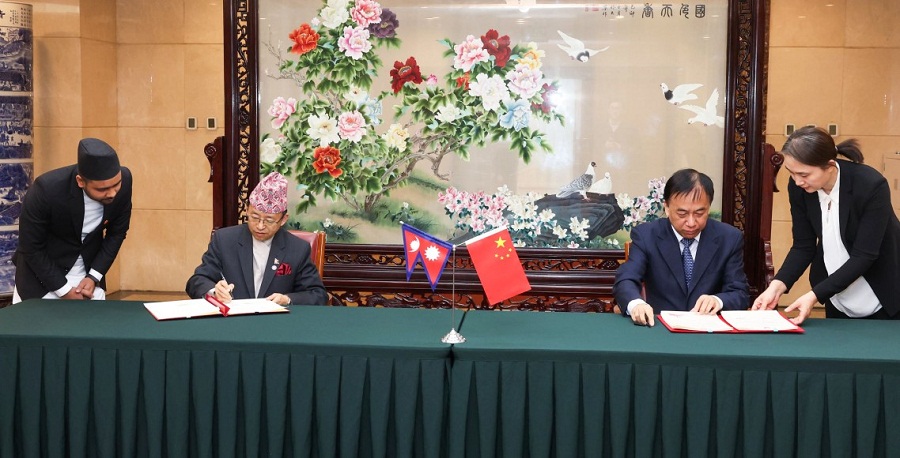
The first point of the five-point Framework provides a detailed background. It is said that other cooperation documents will be signed under this.
The second point contains the principles of cooperation, which include three principles including joint consultation for common development. The first principle mentions joint consultation for common development, the second mentions practical cooperation for meaningful impact, and the third mentions creating a policy environment for investment growth.
The third point includes four objectives of cooperation. These include cooperating in the fields of trade, infrastructure, and connectivity through the development of priority projects. As far as development projects are concerned, it is mentioned that they will fall under the ‘areas of cooperation’ mentioned in the second point of the BRI understanding signed in 2017.
The fourth point of the framework specifies the priorities of cooperation. Under this, economic assistance is given first priority, and financial sector assistance is given second. The third priority is placed on transport, connectivity and logistics. The issue of building a multi-dimensional cross-Himalayan border connectivity network, which has been in the news for a few years, is also mentioned in this point.
The fourth priority of cooperation has been allocated to the areas of trade, industrial capacity and investment. The fifth priority is related to customs operations. It is also mentioned in this point that a detailed framework can be created for cooperation in the fields of education, health and medicine.
The fifth point of the framework mentions ‘identifying projects identified for discussion’. There are 10 of these projects. Among these projects, five are related to infrastructure and urban development. They are 1) Tokha-Chhahare tunnel, 2) Hilsa-Simikot road, 3) Kimathanka-Khandbari road-Kimathanka bridge and integrated check post, 4) China-Nepal cross-border railway on the Nepal side and 5) Amargadhi Dadeldhura City Hall construction.
One project is related to energy. It includes the Jilong-Rasuwagadhi-Chilime 220 kV cross-border power transmission line. There are two projects related to education and health. They include Madan Bhandari Science and Technology University and Kathmandu Science Center and Science Museum.
A project related to industry and trade has been mentioned. The ‘China-Nepal Friendship Industry Park’ to be built in Damak, Jhapa has been included. Similarly, the construction of the Jhapa Sports and Athletics Complex has been included in the sports-related project.
The sixth point outlines cooperation mechanisms. China’s National Development and Reform Commission will collaborate with the Ministries of Foreign Affairs and Commerce, while Nepal’s Ministries of Foreign Affairs and Finance will represent the country.
FRAMEWORK FOR BELT AND ROAD COOPERATION
between
the Government of Nepal
and
the Government of the People’s Republic of China
Government of Nepal and the Government of the People’s Republic of China (hereinafter collectively referred to as the “two sides”, and individually as the “Nepali side” or the “Chinese side”) have reached the following understandings:
COOPERATION BACKGROUND
The People’s Republic of China and Nepal enjoy time-honored traditional friendship, since the establishment of diplomatic relations in 1955. The two countries have witnessed steady progress in bilateral diplomatic ties, mutually beneficial economic cooperation and increasingly close people-to-people exchanges. On 12 May 2017, the Government of the People’s Republic of China and the Government of Nepal signed the Memorandum of Understanding between the Government of the People’s Republic of China and the Government of Nepal on Cooperation under the Belt and Road initiative (hereinafter referred to as ‘the MoU’).
In 2019, the two Heads of State exchanged State Visits to each other’s countries. At the invitation of His Excellency Mr. Xi Jinping, the former President of Nepal Rt. Hon. Mrs. Bidya Devi Bhandari, paid a State Visit to China from 24 April-2 May 2019 and similarly at the invitation of the former President of Nepal Rt. Hon. Mrs. Bidya Devi Bhandari, the President of the People’s Republic of China His Excellency Mr. Xi Jinping, paid a State Visit to Nepal from 12-13 October 2019, the result of which is the elevation of bilateral relations to Strategic Partnership of Cooperation Featuring Ever-lasting Friendship for Development and Prosperity, to strengthen all-round cooperation and promote the overall development of bilateral relations.
Article III (II) of the MoU states that “for cooperation in any specific field, the two sides shall sign agreements or other cooperation documents.” Accordingly, the two sides are entering into this understanding in the field of economic cooperation. The two sides may enter into additional cooperation documents for other areas of cooperation included in the MoU.
Based on the consensus reached at the highest leadership level and the MoU, the Framework for Belt and Road Cooperation between the Government of the People’s Republic of China and the Government of Nepal for economic and project development partnership (hereinafter referred to as the ‘Cooperation Framework’) is thus formulated to establish a structured basis to undertake further negotiations in accordance with following Cooperation Principles, Objectives, Priorities, Projects and Mechanisms to give further effect to the MoU.
COOPERATION PRINCIPLES
The following principles will be followed in conducting the cooperation and negotiations between the two sides:
(1) Joint consultation for common development
The two sides will, by upholding the principles featuring peace and cooperation, openness and inclusiveness, mutual learning, and mutual benefits, conduct consultation and joint contribution for shared benefits. The concepts of openness, green, clean and environmentally friendly development shall be followed, and the goals of people’s welfare and sustainability shall be realized with utmost efforts. The two sides shall respect each other’s sovereignty and common interests and work together to improve people’s livelihoods through mutually beneficial and win-win cooperation.
This Cooperation Framework will accord due consideration to the developmental stages of China and Nepal, with particular emphasis to Nepal’s specific development requirements and priorities.
(2) Pragmatic cooperation for meaningful effects
The two sides will rely on their respective strengths and take into account the development needs of each other. The long-term vision should be adopted with, but equal attention will also be given to immediate needs. The two sides will tap cooperation potential, work seriously to encourage innovation, and based on full discussion of needs and objective analysis of technical, financial, commercial and economic feasibility, promote with utmost efforts the cooperation in major economic areas and key projects that are in the long-term interest of the two countries, and ensure value for money so that more tangible benefits of high standard Belt and Road Initiative (hereinafter “the BRI”) cooperation can be achieved.
(3) Improving policy environment for increased investment
The two sides will encourage each other’s enterprises to act in conformity to market related rules and regulations, and applicable international standards and regulations, and respect the national laws and regulations of their respective countries. The enterprises of the two countries shall be independent to make their own decisions for investment cooperation, and assume sole responsibility for their own profits, losses and risks. The intergovernmental cooperation mechanisms shall be established and continuously improved to strengthen coordination and policy dialogue. The cooperation to improve the legal and regulatory environment shall be promoted and strengthened so as to create a more enabling business environment for high quality foreign investment and technology transfer.
The above principles are elaborations of those already outlined in Article I(II) of the MoU. Both sides will continue to attach importance to the MoU principles.
COOPERATION OBJECTIVES
The two sides conclude this Cooperation Framework, among others to:
(1) establish and deepen economic partnership to promote the common development of China and Nepal by injecting new momentum to trade, infrastructure and connectivity cooperation by accelerating the development of priority projects;
(2) realize the mutual interests shared by the two sides to give effect to the MoU by providing a structured guidance to undertake negotiations for the implementation of the prospective projects;
(3) identify and develop projects that fall within the scope of the Area of Cooperation delineated in Article II of the MOU;
(4) facilitate and expedite the development of projects through subsequent negotiations on areas such as the allocation of financial and technical resources, the arrangement of financing, procurement methodologies, and the designation of entities responsible for implementation and execution.
The above objectives are in addition to the objectives stipulated in Article I of the MoU.
COOPERATION PRIORITIES
Building on the current cooperation, the two sides encourage to deepen cooperation in the following areas:
(1) Economic cooperation
The Chinese side will support Nepal’s development efforts under the framework of jointly building the Belt and Road, by providing technical and financial assistance. The two sides will work to ensure technical support,and aid financing modalities that suit the need of the two sides and of the requirements for sovereign initiated projects.
The two sides will conduct objective analysis of technical, financial, commercial and economic feasibility and ensure value for money for the prioritized projects.
The two sides will continue to call upon international multilateral financial development institutions or mechanisms to provide more financial support for promoting connectivity and development.
(2) Financial Sector cooperation
The two sides will support the cooperation between commercial banks. The Nepali side will welcome and facilitate in the establishment of branches of Chinese banks and financial institutions in Nepal. The two sides will endeavor to expand the use of national currencies in bilateral trade transactions and investment according to practical situation. The Chinese side welcomes Nepali institutional, investors, approved by Government of Nepal, to invest in Chinese financial market and will provide facilitation for enabling a business environment for them.
The two sides will enhance bilateral communication and cooperation, financial institutions and financial regulation between bilateral authorities, promote domestic financial institutions to invest and conduct business in the other side’s market in compliance with, respective laws, and regulations, and provide high quality financial service for the Belt and Road Initiative.
The two sides will strengthen bilateral financing information exchanges and explore regulation cooperation on anti-money laundering based on Memorandum of Understanding on Anti-money Laundering and Anti-terrorism Financial Information Exchanges and Cooperation.
The two sides will deepen cooperation on information exchange and cross-border regulation between bank regulatory authorities under the framework of Memorandum of Understanding, between Nepal Rastra Bank and China Banking Regulatory Commission on Strengthening Bilateral Banking Regulation Cooperation, 20l6.
(3) Transport, connectivity and logistics cooperation
The two sides will jointly build the Trans-Himalayan Multidimensional Connectivity Network through the construction of ports, roads including bridges and tunnels, railways, aviation infrastructure, telecommunication projects, electricity transmission lines to upgrade the level of connectivity.
The two sides will utilize existing China-Nepal intergovernmental consultation and cooperation mechanisms for advancing cooperation for jointly building the Belt and Road, and promote the China-Nepal Cross-border Railway Project, after the accomplishment of feasibility studies.
The two sides will cooperate for the construction of cross border road and tunnel projects, dry ports, Integrated Check Posts (ICPs).
The two sides will maintain close communication to open or increase air routes or flights, according to the air transport agreement and traffic rights arrangements between the two countries.
The two sides will work, with concerted efforts to improve bilateral cooperation mechanisms between postal and express service authorities. The two sides will also promote sustainable and stable development of cross border electronic commerce.
The two sides will expedite their efforts to materialize the understanding of relevant transit transport agreement by improving the infrastructures, procedures and coordination. In line with Trade and Transit Agreement and related Protocols signed by Nepal and China, the two sides agreed to take the necessary steps to materialize the transit transport, traffic-in-transit access to sea/dry ports in China with dedicated facility for import and export.
(4) Trade, industrial capacity and investment cooperation
The two sides will enhance cooperation in expanding bilateral trade and building trade infrastructures. The two sides will adopt trade and investment liberalization and facilitation measures and improve trade environment.
The two sides will encourage enterprises of two countries to carry out cooperation in line with market orientation, and business rules and international norms, leverage their comparative advantages, increase industrial capabilities, promote economic and social development of the two countries and expand bilateral economic relations.
The two sides will improve border cargo clearance efficiency and promote economic and trade cooperation for the prosperity of the border regions of the two countries.
As reflected in the MOU on Energy Cooperation, the two sides will study the feasibility of cross-border transmission projects, encourage enterprises to explore green and sustainable opportunities of cooperation in energy and resources, and promote cooperation in clean energy projects based on market principles.
The two sides will encourage domestic enterprises and industry associations to participate in commercial exhibitions and expos hosted by the other side, to strengthen exchanges and cooperation between exhibition industries of two countries. The Chinese side will provide facilitation for the Nepali side to participate in the China International Import Expo and other similar Expos.
The two sides will build more platforms to promote communication and information sharing between trade and investment facilitation institutions and trade associations.
(5) Customs cooperation
The two sides will strengthen cooperation on border ports, promote the construction of relevant infrastructure including dry ports, enhance the traffic capacity of the opened border ports, and open more border ports according to the need and operation conditions of the opened border ports as appropriate.
The two sides will strengthen cooperation in international trade.
Two sides will promote cooperation on custom matters with the view to facilitating custom clearances of fruits, haylage and other agricultural products, among others. Both sides will strengthen cooperation on border health quarantine, animal and plant quarantine, food safety, commodity inspection, e-commerce, controlling illicit trade, and enhance the level of trade security and facilitation between the two countries through, inter alia, technical exchanges and capacity building.
China will allow designated space to warehousing, transit, and clearing and forwarding services in dry ports and seaports mentioned in the Transit Transport Protocol between China and Nepal.
The Chinese side will provide duty-free treatment to Nepali goods as agreed upon by the two sides.
The two sides may agree on cooperation in education, health and medical sectors by detailing them out in a separate framework for cooperation
IDENTIFIED PROJECTS FOR NEGOTIATIONS
The following projects, as set out in the attached Schedule of this Cooperation Framework, have been preliminarily identified as potential projects for joint implementation between the two sides.
The two sides will, through friendly consultations, prioritize the projects from the Schedule, change or identify new projects for joint implementation, based on infrastructure, development, and connectivity requirements.
The two sides will conclude cooperation documents or agreements for the aprojects through negotiations and will prepare a step-by-step implementation plan for the development and execution of the prioritized projects.
4.Subject to Paragraph 4 (1)(1) of this Cooperation Framework, the financial arrangement and development modalities for any specifically prioritized project (including projects mentioned in this Cooperation Framework) will be separately negotiated and agreed on a project-to-project basis under a separate agreement or arrangement.
6.COOPERATION MECHANISMS
The Chinese side will designate the National Development and Reform Commission together with the Ministry of Foreign Affairs and the Ministry of Commerce to take the lead, while the Nepali side will designate the Ministry of Foreign Affairs together with the Ministry of Finance to take the lead.
The designated ministries and agencies will coordinate bilateral cooperation under this Cooperation Framework.
The two sides decide to regularly review and evaluate the progress of activities under this Cooperation Framework and further identify priority projects for joint implementation. The concerned Ministries and Governmental Agencies of the Government of Nepal will take the responsibility for implementing projects under this Cooperation Framework from the Nepali side.
The Cooperation Framework does not constitute an international treaty hence does not create any rights or obligations under international law.
Any specific project implemented under this Cooperation Framework are subject to each side’s respective national laws, regulations and policies governing the specific project and does not constitute a breach of the obligations of each side under the international laws.
Project cooperation implemented under this Cooperation Framework does not preclude cooperation for the projects with any other country and each side may enter into any mechanism, or agreements on any principles or modality of co-operation with other countries freely as desired.
Any difference or dispute, if any, arising out of this Cooperation Framework shall be resolved through consultations and negotiations between the two sides.
8.This Cooperation Framework will be effective from the date of its signature and shall remain in force for a period of three (3) years, and shall be automatically extended for subsequent (3) years period and so forth, unless either side gives the other side a written notice of three (3) months in advance of its intention to terminate this Cooperation Framework.
9.The termination of the Cooperation Framework will not affect any ongoing cooperation projects.
10.Amendment to this Cooperation Framework can be made anytime by mutual consent of the two sides.
Signed in duplicate on 4 December 2024 in Beijing, in Chinese, English and Nepali languages, the three texts being equally authentic. In case of any divergence of interpretation, the English text shall prevail.
Representative of the Representative of the
Government of Nepal Government of the People’s Republic of China
___________ _______________
SCHEDULE: LIST OF PROJECTS
A. INFRASTRUCTURE, URBAN DEVELOPMENT PROJECTS
Tokha-Chhahare Tunnel
Tokha Chahare Bidur Highway is of strategic importance for Nepal-China international trade. The Tokha Chhahare Tunnel is part of the road alignment connecting Samakhushi and Chhahare and further to Bidur in Bagmati Province of Nepal. This route provides a vital link between Kathmandu, Nuwakot and Rasuwagadhi, facilitating international trade with China. The proposed tunnel aims to reduce travel time, improve road safety, and support economic growth. The Letters of Exchange for project feasibility studies have been agreed between the two sides.
Hilsa-Simikot Road Project
The Hilsa-Simikot Road Project is crucial link to the Karnali Economic Corridor connecting Hilsa (northern border) to Jamuniya (southern border) with about 536 kilometers in length. The corridor is one of the eight North-South Corridors enhancing connectivity between Nepal and China. The proposed road of length 95 kilometers falls in the NH58 highway through which it is expected to enhance the connectivity in rural districts of Nepal through upgradation of roads, widening of the existing bridges and construction of new bridges, as required. The Letters of Exchange for feasibility study of upgrading of Hilsa-Simikot Section of NH58 to two lane standard have already been signed between the two sides.
Kimathanka-Khandbari Road and Kimathanka Bridge and Integrated Check Post Project
The Kimathanka-Khandbari Road and Kimathanka Bridge are integral parts of the Koshi Corridor, one of the eight key corridors linking Nepal to its border with India and China. This corridor stretches from Rani (southern border) in Morang to Kimathanka (northern border) in Sankhuwasabha District, covering approximately 345 kilometres, The corridor aims to connect Nepal to Sigatse, China, enabling a shorter trade route to Lhasa. The project is vital for boosting bilateral trade connectivity, and economic integration between Nepal and China.
Nepali section of the China-Nepal Cross-Border Railway Project
The Nepali section of the China-Nepal Cross-Border Railway Project is a proposed railway line connecting Jilong in southern Tibet, China, with Kathmandu, Nepal. The railway line is expected to traverse Nepal’s Rasuwa district, offering a direct link between China and Nepal and aims to enhance connectivity between the two countries.
Amargadhi City Hall Project
The Amargadhi City Hall Project is an infrastructure development initiative undertaken by the Amargadhi Municipality in the Dadeldhura district of Nepal. The project aims to construct a modern and functional auditorium building and serve as the administrative space for the municipality.
B. ENERGY PROJECTS
Jilong-Rasuwagadhi-Chilime 220 KV Cross Border Power Transmission Line
The project teams have reached an agreement on the technical solutions for the Jilong-Rasuwagadhi-Chilime 220 KV Cross-Border Power Transmission Line, and are willing to discuss further cooperation on that basis.
C. EDUCATION AND HEALTH
Madan Bhandari University of Science and Technology
The Madan Bhandari University of Science and Technology is a relatively new university in Nepal, established with the aim of providing quality education in science and technology and develop highly skilled and proficient technical professionals of international calibre.
Kathmandu Scientific Center and Science Museum
Kathmandu Scientific Center and Science Museum is a game-changing project envisioned to attain a higher level of development in scientific and technological sphere. The center aims to establish itself as a hub to promote innovation, scientific research and development along with the capacity enhancement of personnel of national as well as international scientific community. The museum is expected to have demonstration of the advanced technologies developed as well as the innovations of the scientific center.
The center, along with the museum, acts as the learning center of excellence for young scientists and professionals in the respective fields, among others.
D. INDUSTRIAL AND TRADE INFRASTRUCTURE
- China-Nepal Friendship Industrial Park
China-Nepal Friendship Industrial Park is a mega industrial park to be constructed in Damak, Jhapa as a gesture of true friendship between Nepal and China. The park is expected to promote the growth of industries in eastern Nepal and qualitatively enhance the economy and livelihood of the local people. The two sides have agreed on the Project Development Agreement of the Park Project.
E. SPORTS INFRASTRUCTURE
- Jhapa Sports and Athletics Complex
Jhapa Sports and Athletics Complex is a multi-purpose complex with a modern state-of-the-art stadium and infrastructures for training of professional sportsperson and athletes. The complex aims to cater the diverse needs of sportsperson by providing sustainable and international-standard facilities for various sports in Nepal such as football, cricket and athletics, etc. The complex is expected to contribute to promoting youth engagements through organization of regional, national as well as international sports events, among others.




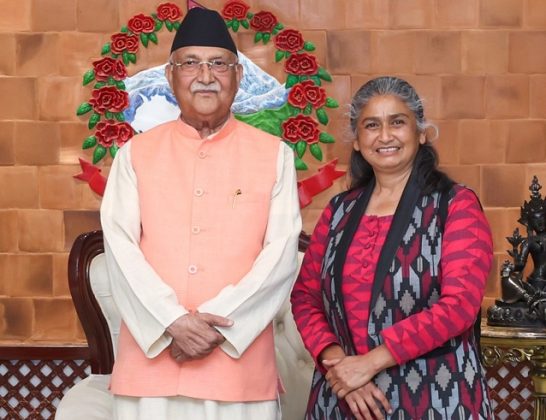
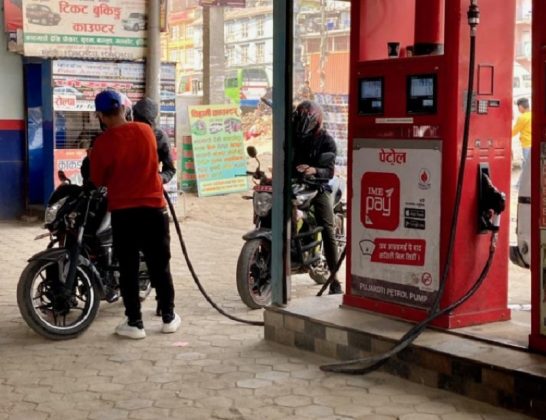
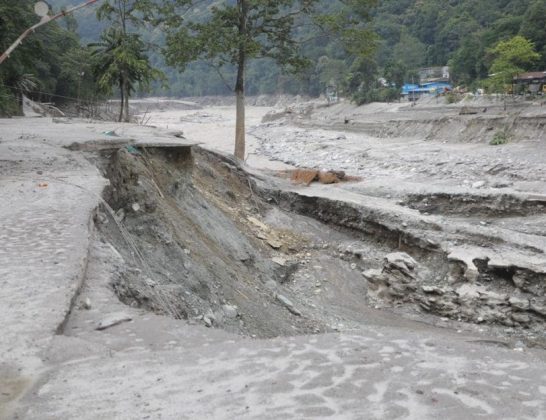
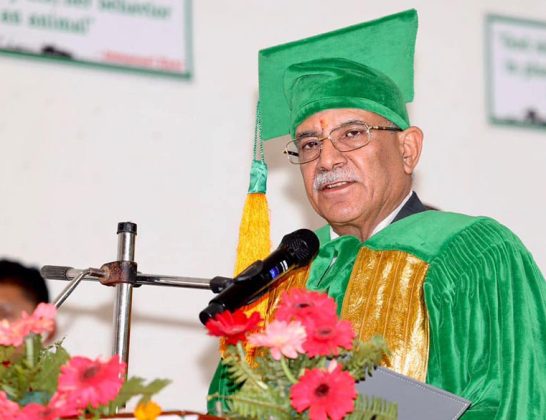


Comments